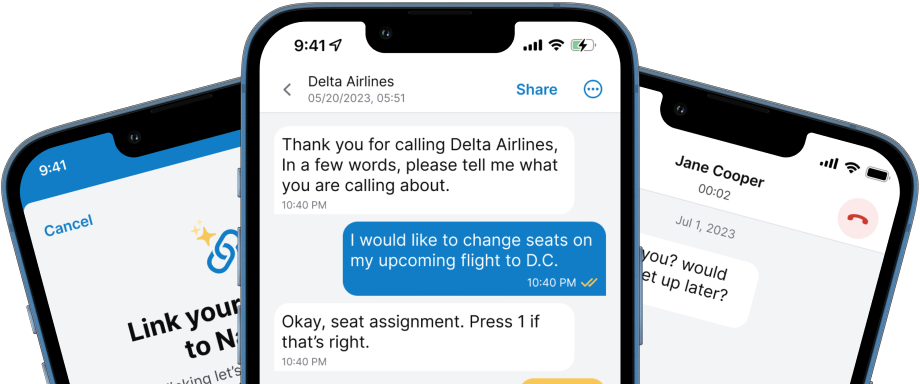Best Practices for Working with an ASL Interpreter- From a Deaf Perspective
Learning the dos and don’ts of working with an ASL interpreter will make your interactions smoother and more effective for everyone involved.

A Brief History of ASL Interpreting
As deaf institutions grew, so did the need for American Sign Language (ASL) interpreting. In the early 20th century, the NAD established the National Registry of Interpreters for the Deaf (NRID) to set standards of practice and certify interpreters. This was the first professional certification of interpreters in the world.
Today, sign language interpreting is a respected profession, with interpreters working in various settings, including healthcare, business, education, government, and the legal system. Interpreters are trained and certified in ASL.
One of the amazing things about the growth of ASL interpreting has been the different kinds of interpreting options for a deaf person like me: Video Remote Interpreting (VRI), Over-the-Phone Interpreting (OPI), On-site Interpreting, and more.
Those services cover virtually any interpreting need: from medical settings to work meetings, in-person and online classes, conferences and conventions, closing on a home, or booking a contractor for the renovations.

8 Tips for Using an ASL Interpreter
Based on my experience, here are some tips for effectively working with a sign language interpreter:
- Prepare in advance: If you know you will be working with an interpreter, try to provide them with as much information as possible beforehand. This can include the purpose of the meeting or class, the topic of discussion, any relevant materials or documents, and any specific vocabulary or terms that may come up.
- Use clear, concise language: Use straightforward language when speaking with the interpreter. Avoid using jargon or complex vocabulary, and try to speak at a moderate pace. This will make it easier for the interpreter to convey your message accurately without delays.
- Maintain eye contact with the person you are communicating with: It can be tempting to watch the interpreter, but it’s crucial to maintain eye contact with the deaf or hard of hearing individual. This helps to establish a connection and show that you are addressing them directly.
- Allow the interpreter to do their job: Trust the interpreter to convey the message accurately. Don’t try to speak for the interpreter or interrupt them while they are interpreting. The interpreter and you are working together as a team. It’s polite to greet them at the beginning of the session and thank them at the end, but otherwise, focus on the people in your meeting.
- Take breaks as needed: Interpreting can be mentally and physically exhausting, so allow breaks as needed. This will help the interpreter stay fresh and focused, leading to better communication.
- Respect the interpreter’s role: Remember that the interpreter is there to facilitate communication and is not responsible for the content of the conversation. Avoid making requests for information. Only you are responsible for remembering or noting what is being said and covered during the session.
- Be yourself: use your ordinary language and speaking style. Speak in the first person, just like you are having a normal voice-to-voice conversation with a person. Avoid such phrases as "Tell her" and "Explain to him."
- Be mindful of lighting: If you lower the lights during part of the service, maintain enough light so that the interpreter can still be seen. Use a small directional "spot-light" if you can.
Following these tips ensures that your communication with a sign language interpreter is effective and respectful. You can also ask the other person(s) about their preference. Deaf individuals may have more experience with the different options for using a sign language interpreter and have valuable insight into the best choice for effective communication at your meeting or event.
My Personal Experience Using an ASL Interpreter

Growing up, most of my interpreting experiences were on-site for one reason. School. My parents had placed me within a school system where I had deaf programs that were insulated within the larger school. I attended John Hersey High School in Arlington Heights, Illinois. This is the same school that the famed deaf actress Marilyn Matlin attended in the 90s.
I used the interpreters for all of my classes, even Advanced-Placement classes. I was also involved in soccer, swimming, tennis, basketball, and football at Hersey, and every meeting, practice, game, and tournament had an interpreter with me for the duration of the season.
The interpreters were a lifeline for me, helping me communicate with and connect with my hearing teachers, coaches, mentors, and classmates. Often, during the season, they would become someone who cared about me and my successes. I still keep in touch with some who I genuinely connected with.
I also grew up attending Trinity Lutheran Church in Roselle, Illinois, on Sundays. The church would pay for an interpreter to attend the 11:00 am contemporary service that I went to with my hearing parents and sister. The only issue was that my parents still needed to do all the legwork to locate interpreters.
I felt called to go on several mission trips through my church; for some, an interpreter went with me. I was incredibly blessed to grow up in a church that included me, and I know that is not the case everywhere.
As I got older, I learned more about how scheduling on-site interpreter services involves considering travel time and costs. I have experienced situations where the interpreter fell ill the morning of or where the weather took a sudden turn in winter, making for treacherous driving conditions.
The service that day would be uncomfortable and tiring for me. I would sit there and find spots to stare at to kill time when I am exhausted from lipreading the pastor or the choir. This rarely happened, but when it did, it sucked.
Every deaf person knows the feeling of showing up to an event only for the interpreter to be unable to make it for whatever reason.
Also, I have a lot of experience with Video Relay Services (VRS). It is a convenient solution for everyday conversations when I want to call a hearing person in a different location. I download the apps onto my phone and my work desktop computer. I can make calls at any time, like a hearing person would. This flexibility does not allow me to hold back in life.
The interpreters online through VRS are not people I know. They are the conduit for which information is passed. But occasionally, I have encountered interpreters from my past who currently work for a VRS company. Those calls can be awkward at times. It can feel like a violation of my privacy.
Remember that each interpreter wants to ensure that deaf and hard of hearing individuals receive full access to communication.





